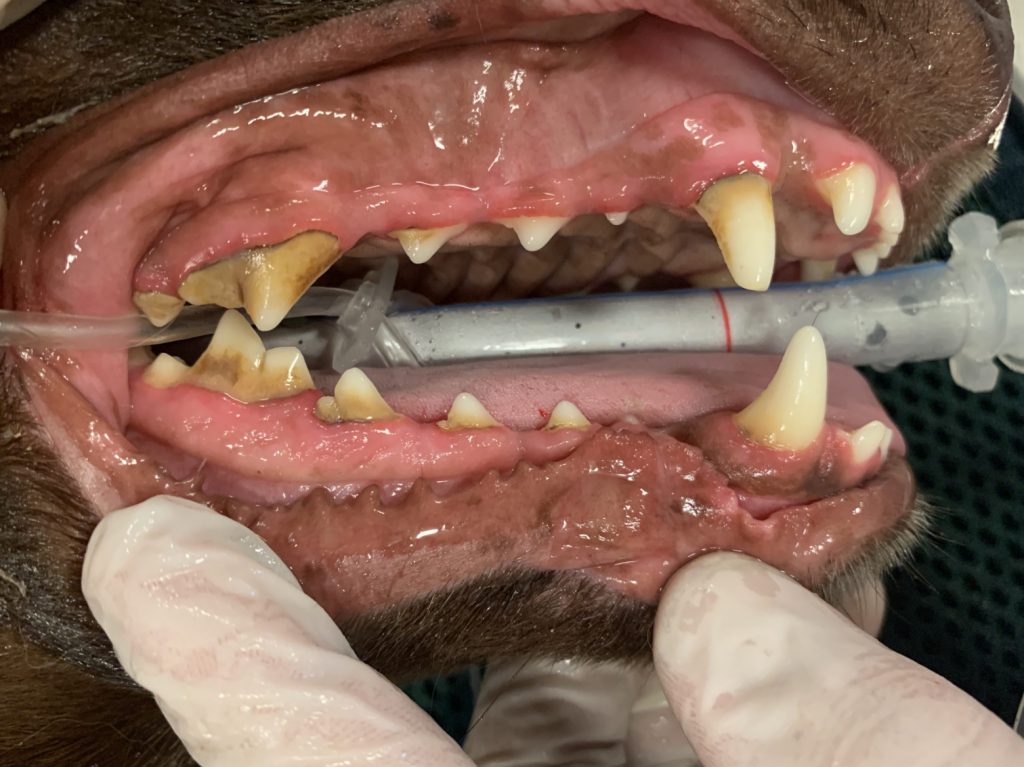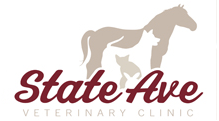 State Avenue Veterinary Clinic recommends regular dental check-ups along with dental hygiene at home to improve your pet’s heath, happiness, and well-being. Untreated dental disease not only results in unsightly teeth but can lead to pain, bone loss, and infection. It can also lead to systemic health issues such as heart and kidney disease and threaten your pet’s overall heath. Dental health is an important part of your pet’s preventative health care.
State Avenue Veterinary Clinic recommends regular dental check-ups along with dental hygiene at home to improve your pet’s heath, happiness, and well-being. Untreated dental disease not only results in unsightly teeth but can lead to pain, bone loss, and infection. It can also lead to systemic health issues such as heart and kidney disease and threaten your pet’s overall heath. Dental health is an important part of your pet’s preventative health care.
Just like our dental and oral health is important, so is it important for our pets for their best health and quality of life. We wouldn’t let a skin infection linger untreated but so often our pets suffer because the problem is hidden from easy view. Bad breath, yellow teeth, and red bleeding gums aren’t normal and may be causing more pain and discomfort than we realize.
My pet doesn’t act painful so how can there be a problem in the mouth?
Many times I get asked, “Well won’t I know if a tooth is bothering my pet?’ The answer is it is very rare to find a pet refusing food or overtly painful because of dental disease. Pets hide pain and illness just like their wild counterparts. If the condition is gradual many owners may attribute their pets painful mouth to “acting older” or “getting grumpy”, or “they just don’t like their mouth touched”. More often we find that once the chronic infection and pain is treated owners report their pet is like a new dog or cat again, playful and happy.
What is dental disease?
Nearly 75% of all pets over the age of three suffer silently with periodontal disease. Periodontal disease starts as bacteria mixed with food particles and saliva creating plaque on the tooth surface and along the gumline. The earliest sign of periodontal disease is gingivitis or red and swollen gums. If untreated, the plaque can then mineralize into more visible tarter and calculus. Not only does this lead to bad breath and discolored teeth, but the infection also begins to affect the tooth’s’ supporting structures and even the bone of the jaw around the tooth.
Dental disease photos
Gingivitis and plaque and tartar accumulation can be seen in the two cases below; the tube in the center of the mouth is allowing for us to administer anesthesia and keep their lungs clear.


What can you do today to ensure your pet maintains a healthy mouth?
- Visit your veterinarian for regular oral examinations to assess for gingivitis, dental tarter, and to check for broken teeth that can be painful and lead to infection as well.
- Start regular at-home dental care with regular tooth brushing, dental treats, water additives, or other at-home veterinary recommended products. Look for the Veterinary Oral Health Council (VOHC) seal on the available dental products.
- Start early and regular Comprehensive Oral Health Exams and Treatments (COHAT). This is especially important for at-risk breeds (including small breed dogs and shorter faced “brachycephalic” pets).
- Insist on regular imaging (radiographs, CT imaging) at the time of your pets COHAT. We know much of the dental disease may actually be happening below the gumline and so imaging allows us to investigate to ensure we aren’t leaving painful or diseased teeth untreated. What we see is just the tip of the iceber
CT imaging and post-cleaning photos



Signs of dental disease:
- A loose or wiggly tooth
- Bad breath
- A cracked or fractured tooth
- Bleeding or swollen gums
- Heavy tarter
